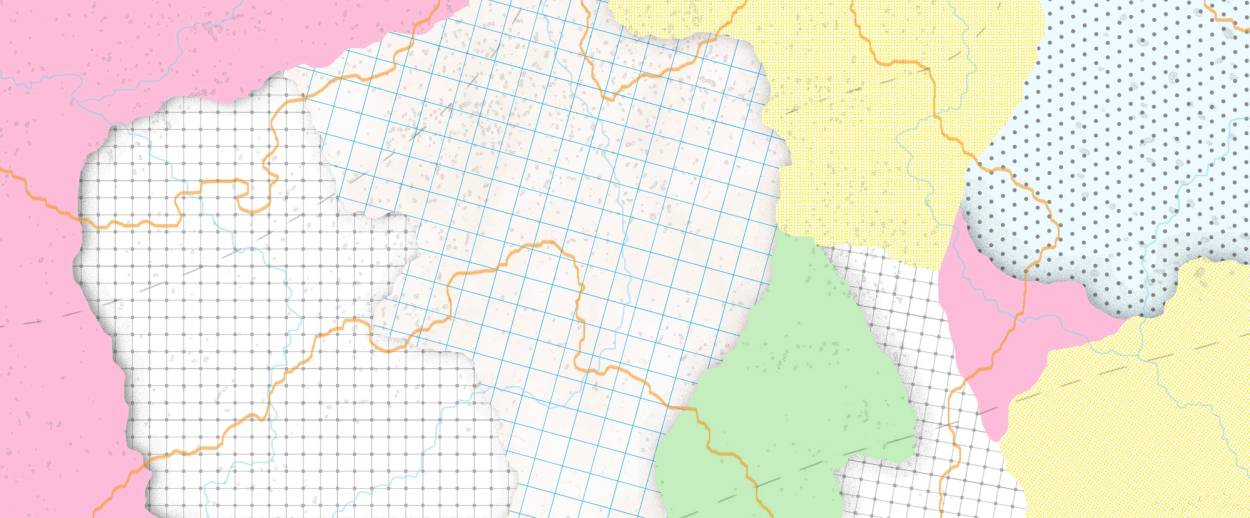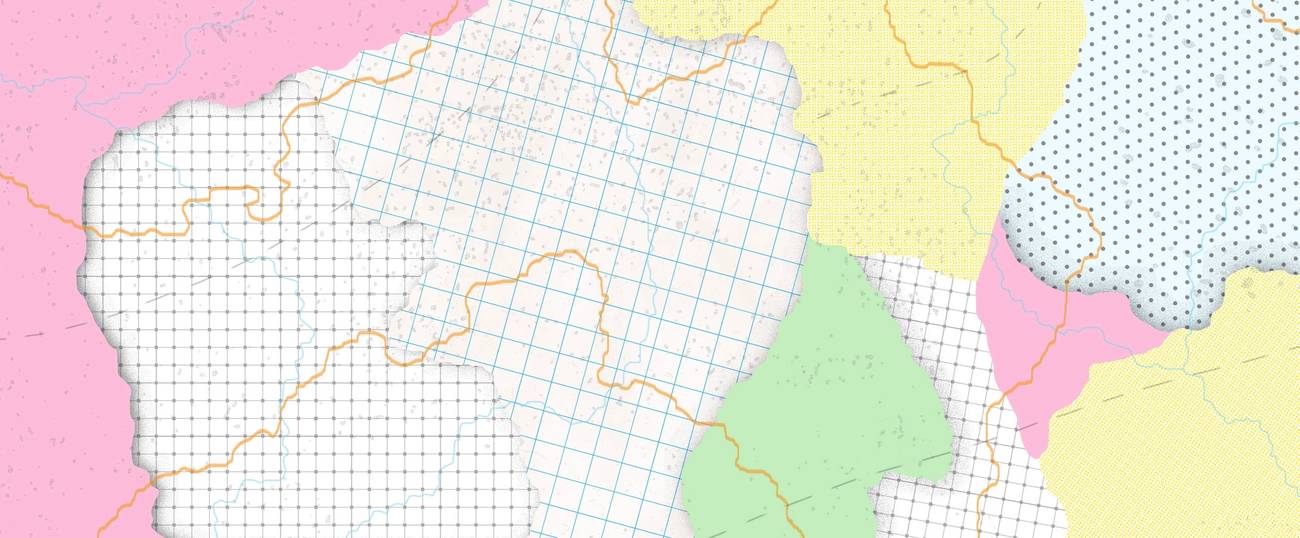The One-Map Solution
Drawing the line on borderlines




In my bedroom when I was a kid stood a desk lamp in the form of a globe. At a certain age I started noticing something odd about Central Europe. The lamp, when lit, showed some extra-dark boundaries. With India ink, my father had divided Germany between East and West and cut off East Prussia, westernizing the Polish border. I got a kick out of his revision. At some point I figured out that my parents must have bought this globe, complete with swollen Germany bulging far eastward, sometime before World War II ended. My father’s rectification was designed to conform with political reality. He had inked victory in.
Maps are depictions with teeth; sometimes with fangs. I think of the politics of maps now that another map war is on—this one displaying both wishful hopes and sharp teeth. It would be infantile were it not dangerous.
For many years now, Arab countries have depicted the Middle East without Israel. I saw one in the Saudi pavilion at the 1986 Expo in Vancouver. Just this past December, HarperCollins apologized for abolishing Israel from its English-language atlas of the Middle East, removing from sale and pulping all copies not yet sold. Palestinian textbooks between 1990 and 2003 have stuck with pre-1948 maps of the land between the river and sea, sometimes going so far as to omit the devilish words “Tel Aviv.” A three-year study funded by the U.S. State Department and led by Bruce Wexler, an emeritus professor of psychiatry at Yale, and reported in the Guardian in 2013, concluded:
Only 4% of maps in Palestinian textbooks show the green line, which separates Palestinian territory from Israel, or label the area west of it as “Israel.” Almost six out of 10 maps depict no borders, and another third include the green line but make no reference to Israel.
Talk about post-colonialism’s favorite nemeses, erasure and silencing. But as long as we’re on the subject of erasure, the habit of conquest through cartography surges on. Professor Wexler’s research group also found, in 2013, that
in Israeli textbooks, 76% of maps show no boundaries between Palestinian territories and Israel, and Palestinian areas are not labeled. “Since these maps are generally presented as maps of Israel, the absence of borders between Israel and Palestine can be seen as implying that the Palestinian areas are part of the state of Israel,” says the report, Victims of Our Own Narratives? Portrayal of the “Other” in Israeli and Palestinian School Books.
The custom of political erasure has come to the Western Hemisphere as well. Mira Sucharov, an associate professor of political science at Carleton University in Ottawa, reported recently that her kids’ Hebrew school textbooks were missing (you guessed it) the Green Line. The occupation of the West Bank—military, political, and financial—turns out to be cartographical as well.
How common such erasures are isn’t clear—Professor Sucharov scrupulously notes exceptions at other schools and Jewish venues—but it’s worrying. The objection that the Green Line is not a national border but rather “only” an armistice line doesn’t erase the fact that maps depicting sea-to-river Israel treat the West Bank as an integral territory of the Jewish state. That powerful groups in Israel embrace some form of annexation only underscores the significance of this cartographical sleight-of-hand.
What must be said, and said again, and amplified, to Israel’s defenders as well as its detractors, is that if there is ever to be two-state coexistence, Israelis will have to accept the Green Line, however modified it may turn out to be by swaps in some (alas, not very immediate) future agreement. Every fantasy map is an insult, a ratification of injury, and a preface to more injury still. The same goes for every Middle Eastern map that wipes out the state of Israel.
Some maps are hymns to a conquest that has already taken place; others are overtures to a slaughter not yet performed but foreseen with glittering eyes. Lines on a map are instructions for knives. Zealots kill and die in their name. The war of maps is not only symbolic; it’s propaganda for delusion and a rehearsal for worse than delusion. At the far end of extremity, the symbol is a rehearsal for annihilation.
J Street University is circulating a map that restores the Green Line and working to get it into synagogues, Hebrew schools, and summer camps. Good for them. Of course, fighting (nonviolently) over maps is preferable to shooting over the borders of the territories they represent, but there’s no substitute for a one-map solution.
***
Like this article? Sign up for our Daily Digest to get Tablet Magazine’s new content in your inbox each morning.
Todd Gitlin (1943-2022), was a professor of journalism and sociology and chair of the Ph.D. program in Communications at Columbia University, and the author of among other books The Sixties: Years of Hope, Days of Rage; Occupy Nation: The Roots, the Spirit, and the Promise of Occupy Wall Street; and, with Liel Leibovitz, The Chosen Peoples: America, Israel, and the Ordeals of Divine Election.